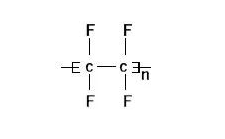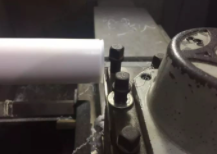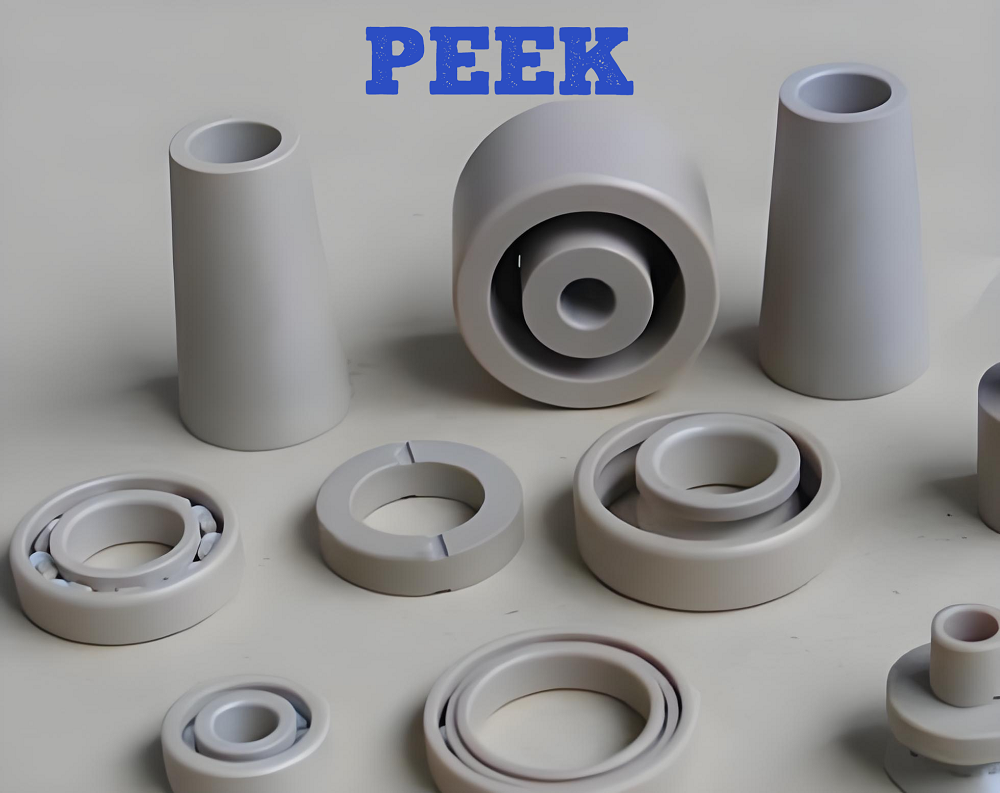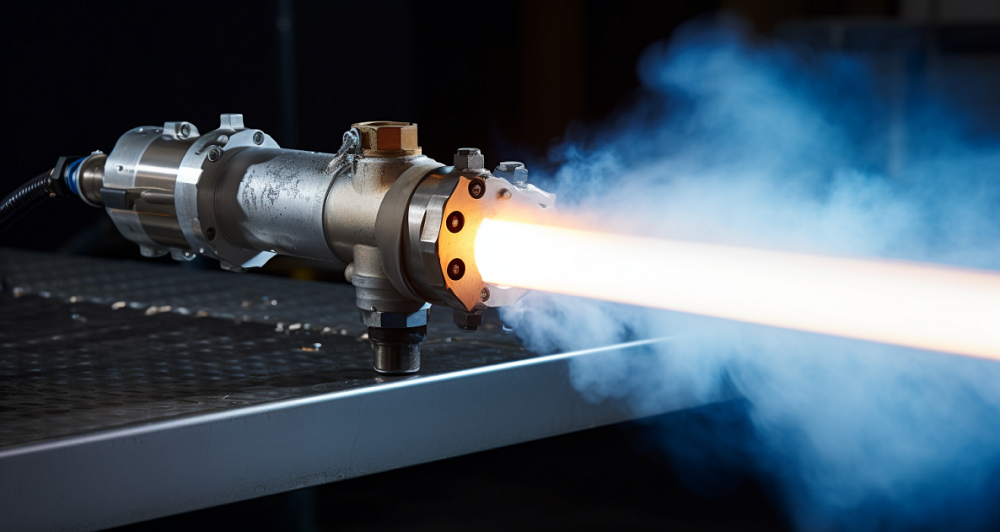- Home
- Machining techniques
- CNC Machining Services
- Cooperative supply services
- Designs
- Materials
- Finishing Services
- Shop
- Products
- Guide
- About Us
- Contact Us
2022.8.29
Polytetrafluoroethylene (PTFE), as a kind of engineering plastics and self-lubricating material, has excellent high and low temperature performance and chemical stability, excellent electrical insulation, non adhesion, weather resistance, non combustibility and good lubricity. Due to its excellent properties, polytetrafluoroethylene is widely used in chemical industry, materials, medicine, food industry, aerospace and other industries. In this article, we discuss the PEFE properties and applications.
1. Because the volume of fluorine atom is larger than that of hydrogen atom, the length of F-C bond is shorter, and the negative charges of fluorine atoms of adjacent macromolecules repel each other, the van der Waals force between non bonded atoms in PTFE has a large repulsive force, which makes it impossible for the molecular chain to be arranged in a plane zigzag shape in space like that of polyethylene. Instead, it can only be arranged in an elongated spiral twisted zigzag shape, so that the larger fluorine atoms can be stacked closely around the carbon-carbon chain skeleton. This helical conformation just surrounds the carbon chain skeleton of PTFE which is susceptible to chemical attack to form a tight and completely “fluorinated” protective layer, which makes the main chain of PTFE free from any external agent. Below 19. D egree. C., one pitch may include up to 12-26 carbon atoms. When the temperature is higher than 19 ℃, the molecular chain is slightly loosened and the pitch is elongated. One pitch can include up to 14-30 carbon atoms.
2. The connection and close stacking of fluorine atoms and skeleton carbon atoms make the molecular chain very rigid, and the high regularity of the molecular chain makes PTFE highly crystalline, which determines that PTFE has high heat resistance and high melting point.
3. The two fluorine atoms connected to each carbon atom are completely symmetrical, making PTFE a complete non-polar polymer, giving PTFE material excellent dielectric and electrical insulation properties.
4. The fluorine atom has a shielding effect on the skeleton carbon atom, and the F-C bond has a high bond energy. In particular, when two fluorine atoms are connected to one carbon atom, the bond length is further shortened and the bond energy is increased, so that the material has a high thermal stability. Tetrafluoroethylene monomer is composed of four F atoms symmetrically arranged on two C atoms. The C atoms are double bonds and cannot rotate freely. After polymerization, the carbon atoms on the main chain of PTFE molecular chain and the single bonds between carbon atoms and fluorine atoms can rotate freely.
5. Due to the above fourth characteristic, and the non-polar and crystalline structure of PTFE, the PTFE material has extremely excellent chemical reagent resistance and solvent resistance.
6. High rigidity of molecular chain and abnormally large molecular chain. The melt viscosity of polytetrafluoroethylene is extremely high and it is difficult to flow.
7. The molecular chain is completely nonpolar. The attraction between the molecular chains of PTFE is very small, and the molecular chain is a high rigid chain without branches, and the entanglement is very small, which makes the mechanical properties of PTFE open material poor in macroscopic and easy to appear cold flow phenomenon. PTFE is a completely symmetric and unbranched linear polymer with no polarity.
8. There is no branch chain on the macromolecular main chain of PTFE, and cross-linking cannot be formed in the whole, so its molecular profile is smooth. This smooth molecular profile makes it not only exhibit low friction characteristics, but also easy to transfer to the dual surface to form a thin transfer film during the sliding process.

1. Chemical resistance: because the bond energy of “C-F” bond is very high, it is not easy to be disassembled, and the stacking density between polytetrafluoroethylene molecules is large, which makes it difficult for various reagents to penetrate into the middle of the molecular chain. The substitution of truncated atoms causes PTFE to form a helical structure and form an inert shell around the C chain. This inert spiral perfluorinated “shell” coupled with the non-polar and crystalline structure of PTFE molecules makes PTFE have excellent chemical resistance. Except for dissolving alkali metal, elemental fluorine and strong fluorinated medium and sodium hydroxide at 300 ℃, polytetrafluoroethylene is hardly corroded by any other chemical agents. All strong acid, strong alkali, strong oxidant and salt reagents can not affect PTFE even under heating conditions. Even in boiled aqua regia, the quality and performance of polytetrafluoroethylene have no change. For organic compounds, except halogenated amines and aromatic hydrocarbons, which cause slight swelling, all other organic solvents have no effect on PTFE. Therefore, CNC machining PEFE material is also known as the “king of plastics”.
2. Heat resistance and cold performance: since fluorine atoms replace hydrogen atoms, the molecular chain changes from planar structure to helical structure. The fluorine atoms form a “protective shell” outside the framework of the molecular carbon chain, and the C-F bond energy is high. Therefore, polytetrafluoroethylene has excellent high and low temperature resistance performance. This performance shows that PTFE materials can be used in the temperature range of – 190 ℃ – + 260 ℃ for a long time. Even when the temperature is reduced to – 196 ℃, An elongation of 5% can be maintained. In actual use, it can withstand high temperature of 280 ℃ and can reach 300 ℃ in a short time. Sublimation starts when the temperature reaches above 290 ℃, but the weight loss rate is very small, only 0.0002%. When the temperature reaches 327 ℃, it reaches the gel state. The above-mentioned properties show that it is an ideal filter material that can be used in harsh environments.
3. Flame retardancy the flame spread in high temperature or chemical flammable environment is very harsh, which requires better flame retardant materials for protection, and polytetrafluoroethylene fiber is the earliest type of high temperature resistant flame retardant fiber. His limiting oxygen index (LOI) is as high as 95%, which means that it needs an oxygen content of 95% to ignite and maintain the flame.
4. The molecular chain of lubricating and non viscous PTFE presents a rigid spiral structure, and the mutual attraction between macromolecules is small, which makes the PTFE molecular chain easy to slide relatively, and the attraction of its surface to other molecules is small, which makes the friction coefficient of PTFE material very small, between 0.008 and 0.05, which is the smallest among the existing synthetic fibers, only 1 / 6 of that of nylon. Therefore, it can be used in situations where maintenance free, non adhesive and easy sliding performance are required. In a specific range, the dynamic friction coefficient tends to decrease with the increase of load or temperature. The surface free energy of PTFE is very small, and the surface tension is only 0.019n/m, which is the variety with the smallest surface free energy among the known solid materials. The existing solid materials can hardly adhere to its surface. Therefore, if the filter material made of 100% PTFE fiber is still a non stick material, the energy consumption can be reduced when filtering the ash.
5. It is resistant to aging in the atmosphere. PTFE is 100% stable to ultraviolet rays and will not age. Even if it is exposed outdoors for 15 years, there is no obvious change in the mechanical properties of PTFE materials.
6. Other properties PTFE material also has low permeability, excellent insulation, weather resistance, water repellency, water resistance and good shrinkage performance.
1. Strong chemical stability. Polytetrafluoroethylene can withstand the action of most strong acids and bases, and can be widely used in various anti-corrosion devices.
2. Wide temperature range. Polytetrafluoroethylene can work normally in the temperature range of – 50-200 ℃, and the maximum working temperature is 540 ℃.
3. Protruding non stick. Polytetrafluoroethylene has extremely small surface energy and excellent surface non stickiness. It is widely used in the design and application of antifouling pipes and other devices.
4. Excellent lubricity. Polytetrafluoroethylene (PTFE) is widely used as lubricating material in mechanical equipment because of its small force and low friction coefficient.
 Characteristics & Surface Treatment Methods Of PTFE Plastic – Teflon CNC Machining Material
Characteristics & Surface Treatment Methods Of PTFE Plastic – Teflon CNC Machining Material
 How To Improve The Machining Quality Of PTFE?
How To Improve The Machining Quality Of PTFE?
 PTFE Overview: Pros & Cons, Characteristics, CNC Machining PTFE
PTFE Overview: Pros & Cons, Characteristics, CNC Machining PTFE
 PEEK vs PTFE Plastic: Properties, Formula, Temperature, Price, Uses Differences
PEEK vs PTFE Plastic: Properties, Formula, Temperature, Price, Uses Differences
 What is HVOF Coating – HVOF Thermal Spray Process, Materials, Benefits, Machine, Applications
What is HVOF Coating – HVOF Thermal Spray Process, Materials, Benefits, Machine, Applications
 Spring Material Types (Properties, Grades, Uses) & Best Selection for Your Project
Spring Material Types (Properties, Grades, Uses) & Best Selection for Your Project
